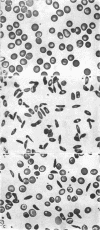Abstract
The amount of fetal hemoglobin (Hb F) in erythrocytes of patients with sickle cell anemia (Hb SS disease) was measured by two methods: (a) photometry of individual cells stained for Hb F by the Kleihauer-Betke technique; and (b) chemical assay of alkali-resistant hemoglobin in cells distributed according to specific gravity by ultracentrifugation. Irreversibly sickled cells (ISC), which could be identified directly during photometry and which were found to gather in high concentration at the bottom of ultracentrifuged cell columns, contained significantly less Hb F than non-ISC. Cell content of total Hb was constant regardless of cell size, shape, or ultracentrifugal behavior: thus absolute amounts of Hb F and S varied reciprocally from cell to cell.
In experiments designed to estimate age, at formation, and rate of destruction of ISC, Hb SS blood was incubated with selenomethionine-75Se (which labels reticulocytes) or 51Cr (which labels erythrocytes at random) and reinfused. Sequential blood samples were separated by ultracentrifugation into fractions rich in reticulocytes, non-ISC, and ISC; and chronological changes in the specific activity of each fraction were determined. Analogous information was obtained from radioautography of sequential blood samples after reinfusion of whole blood labeled with amino acids-3H: this technique permitted direct visual characterization of labeled erythrocytes as ISC or non-ISC, all of which had been reticulocytes at the time of reinfusion. The transformation of non-ISC into ISC, presumably a manifestation of membrane damage, proved to begin soon after cell release from the marrow; and ISC subsequently underwent rapid removal from the circulating blood.
It is therefore apparent from these studies that, in Hb SS disease, relatively small reciprocal changes in the amounts of the two major hemoglobins carry predictive importance: (a) net synthesis of Hb F is least in erythroid cells destined to become ISC; and (b) these irreversibly deformed erythrocytes suffer preferential destruction.
Full text
PDF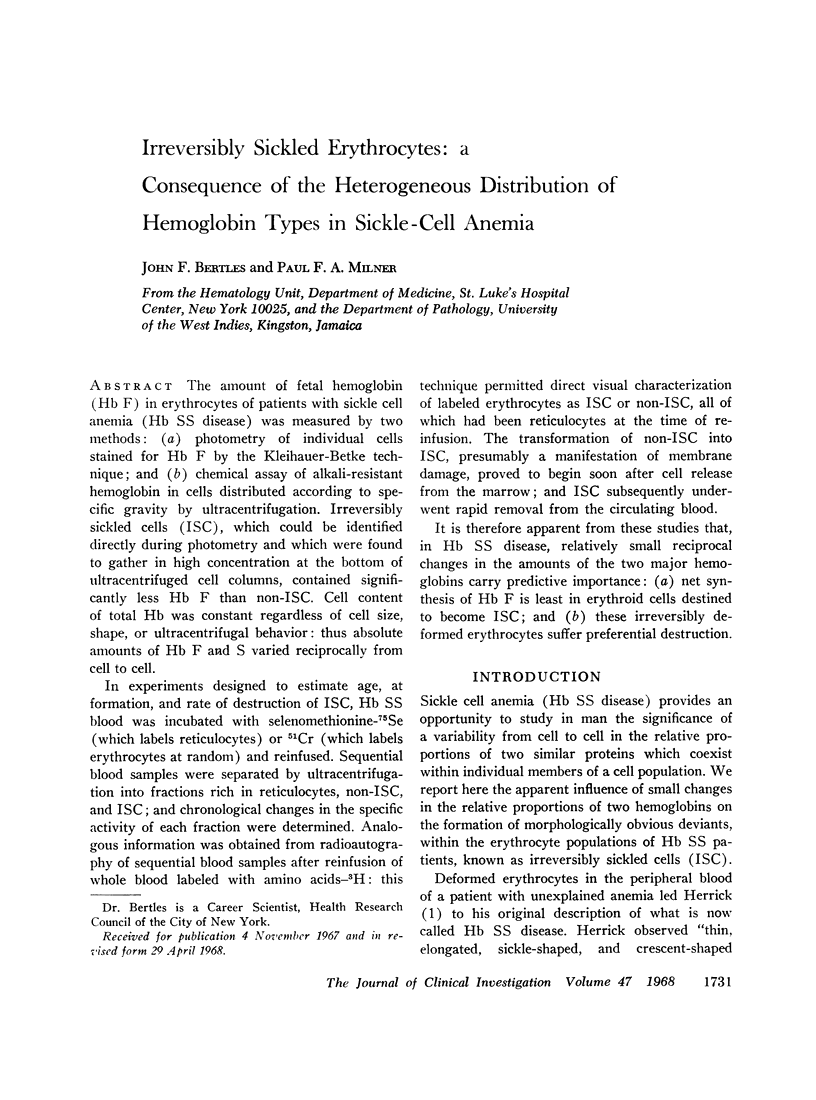
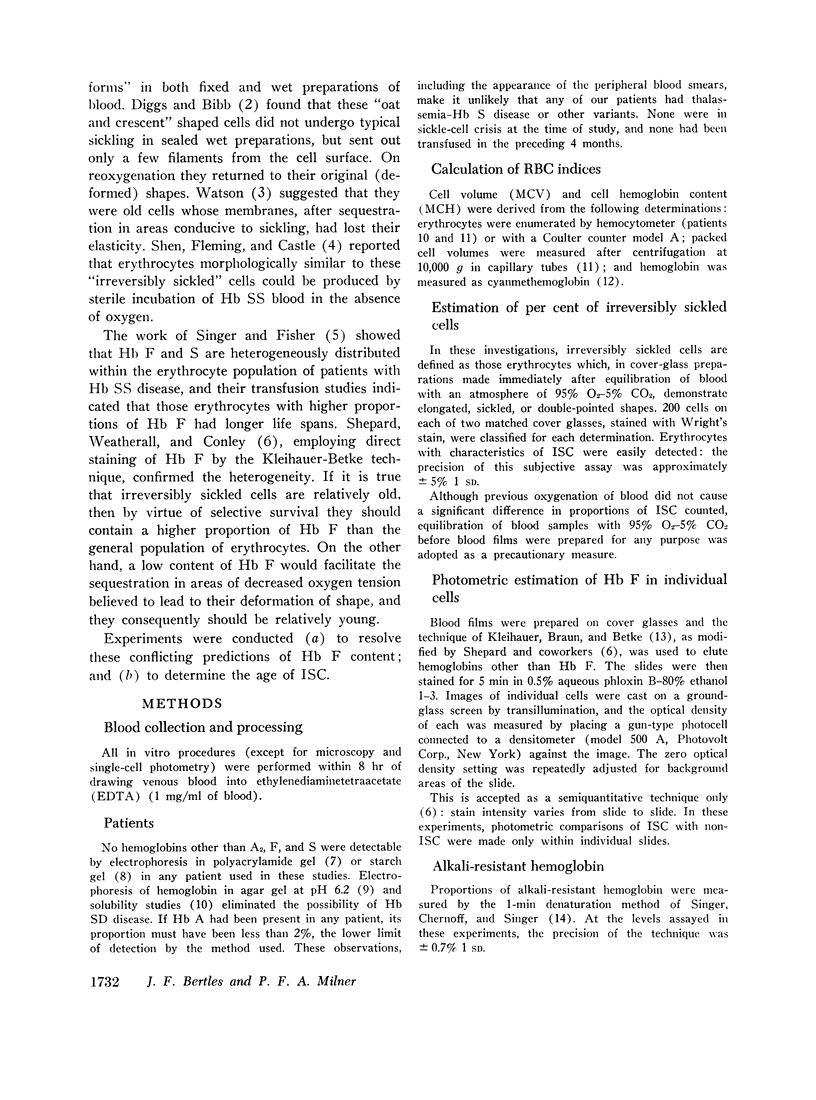
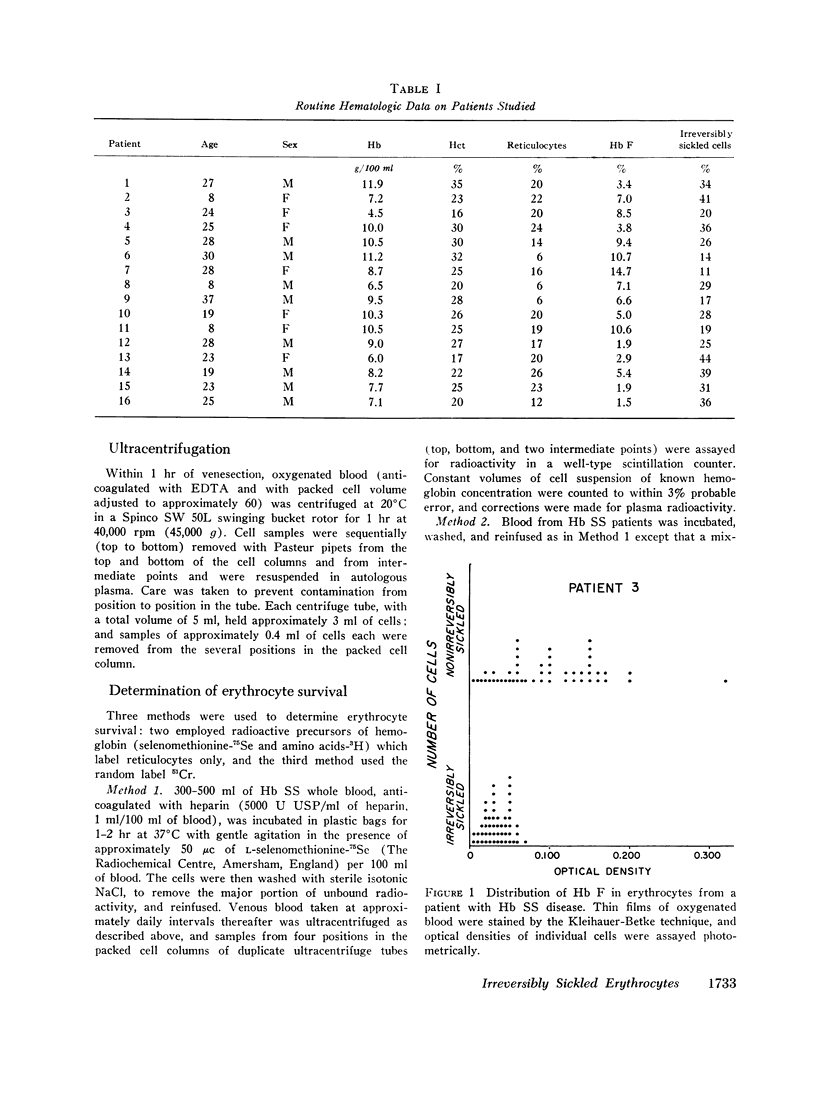
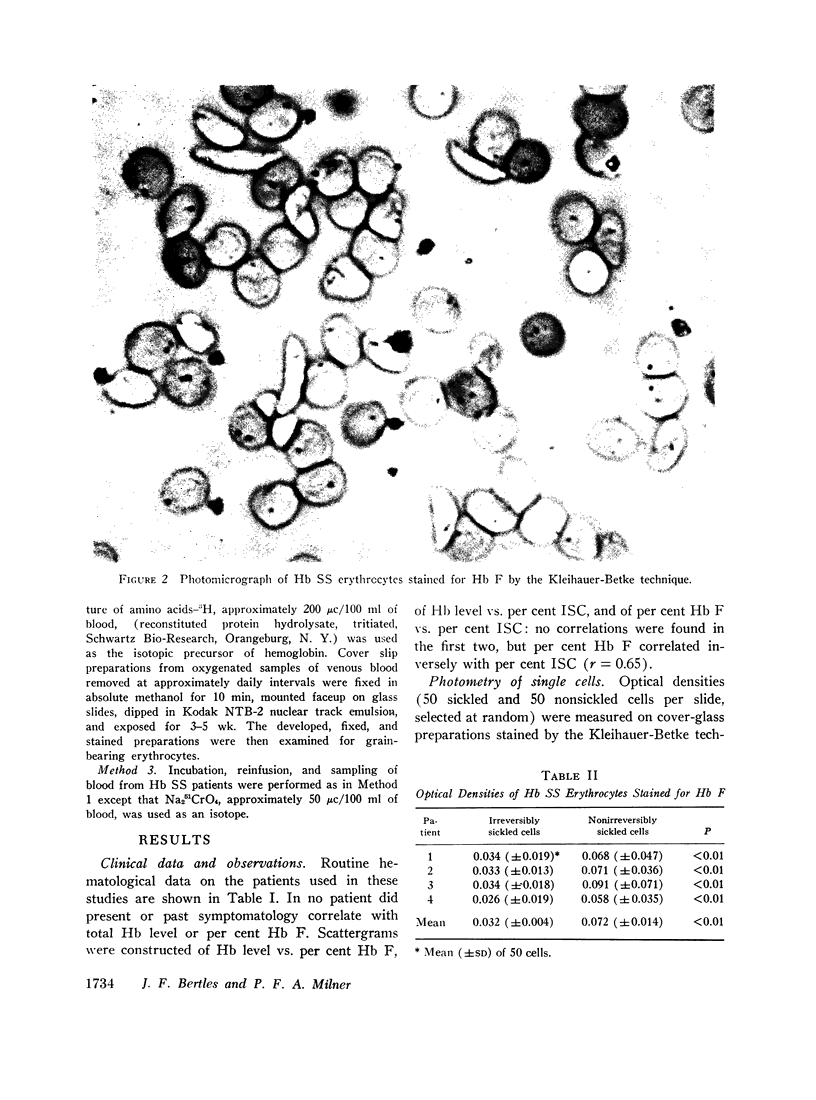
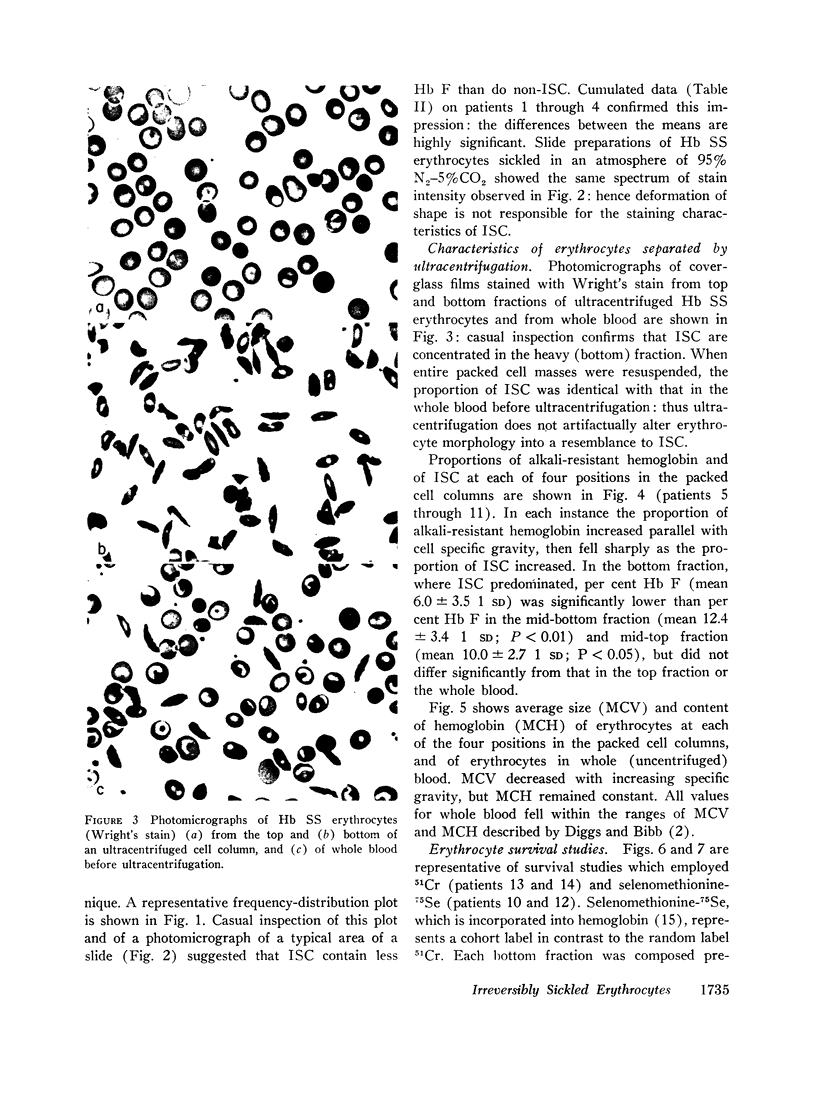
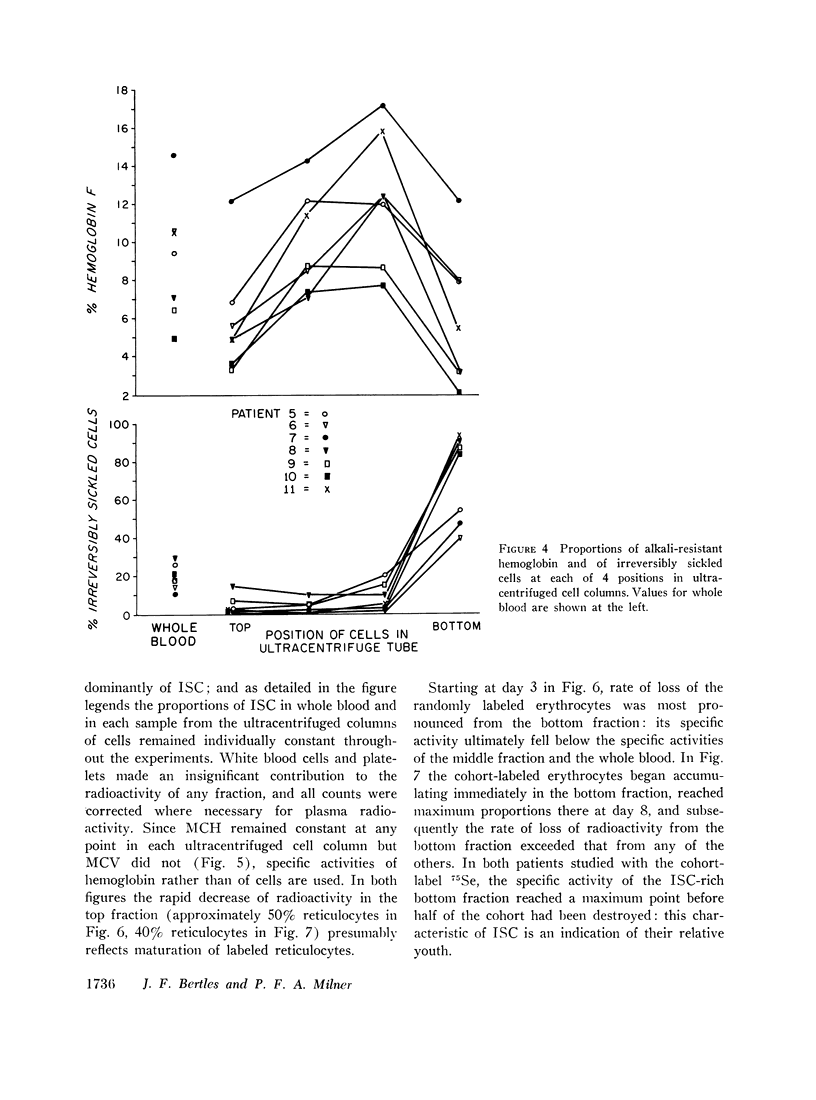
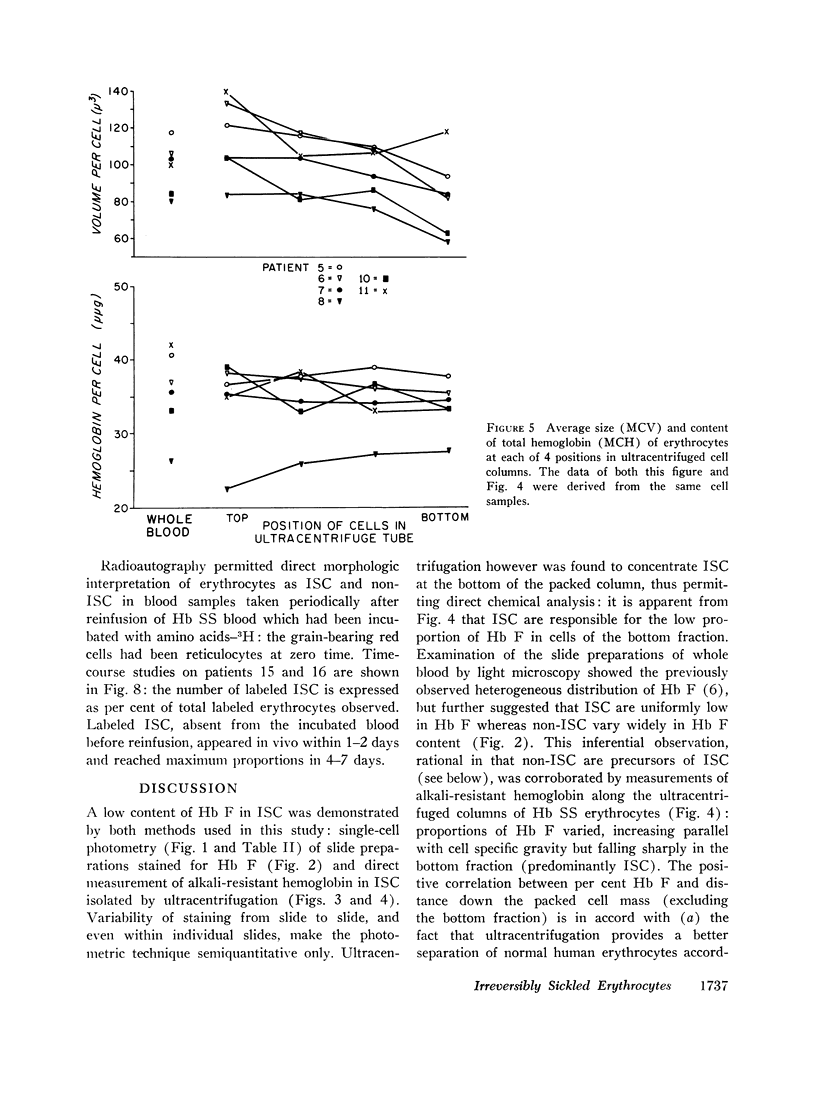
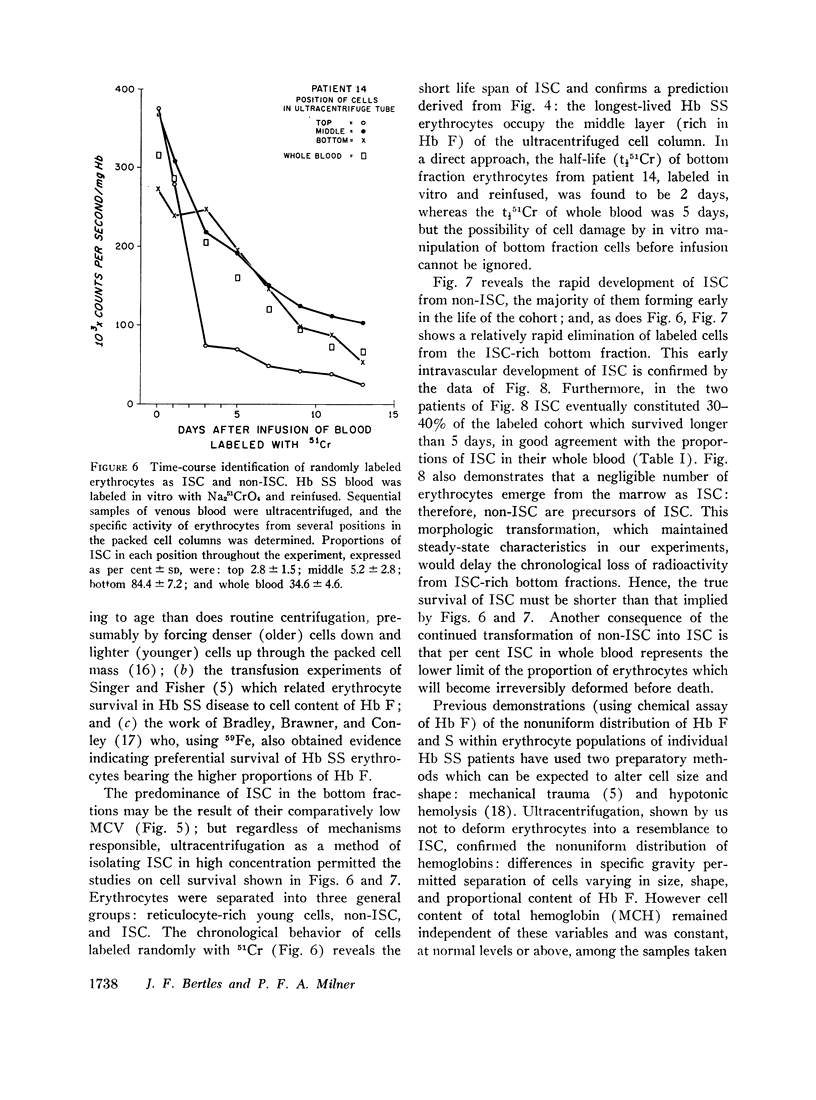
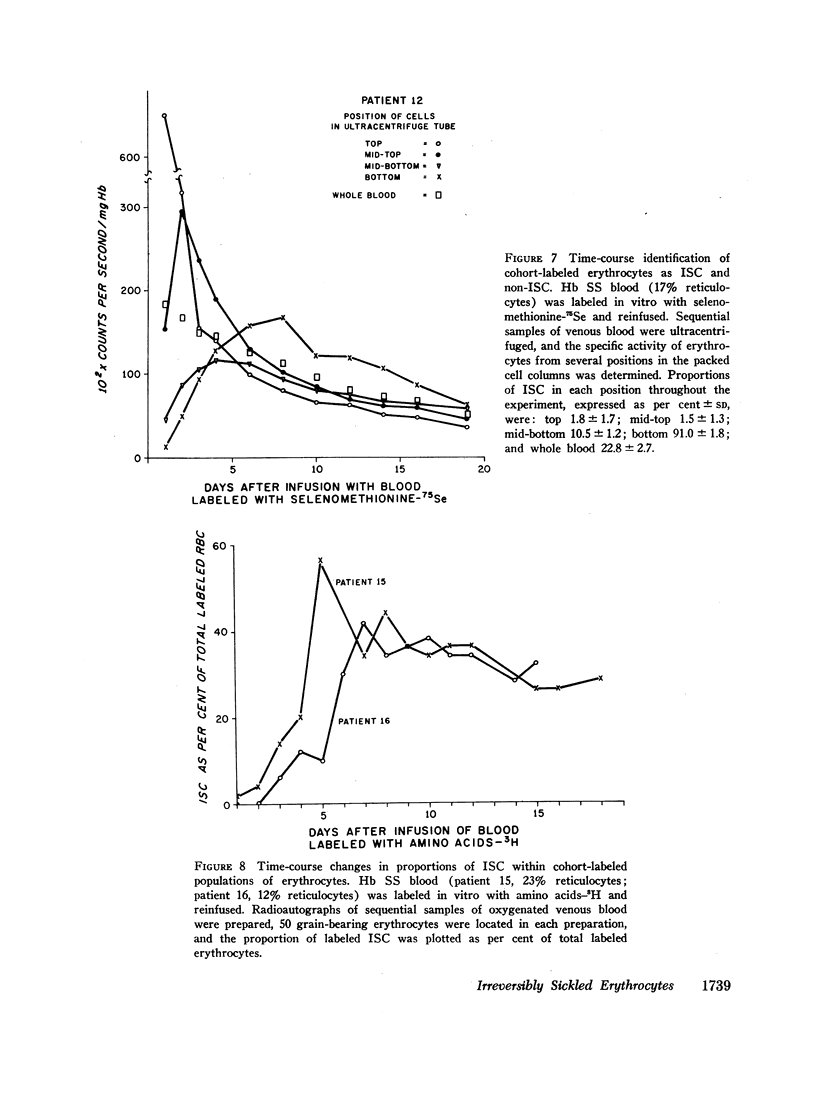
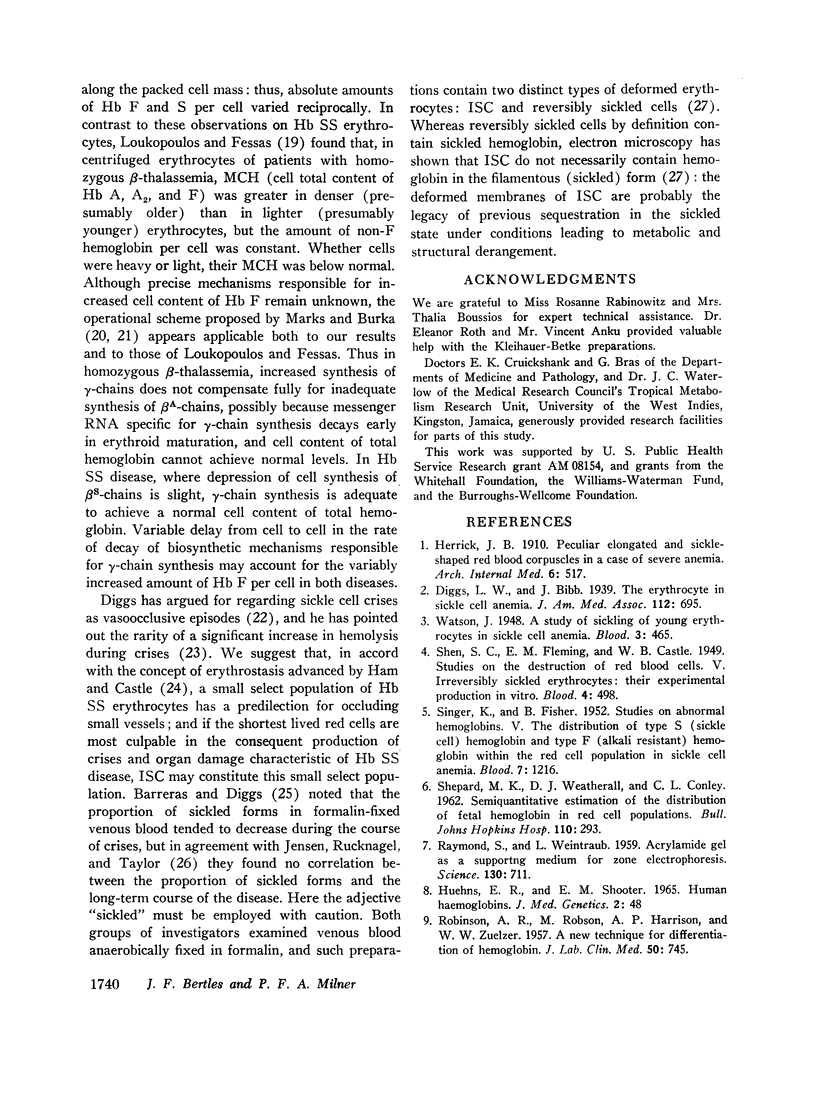
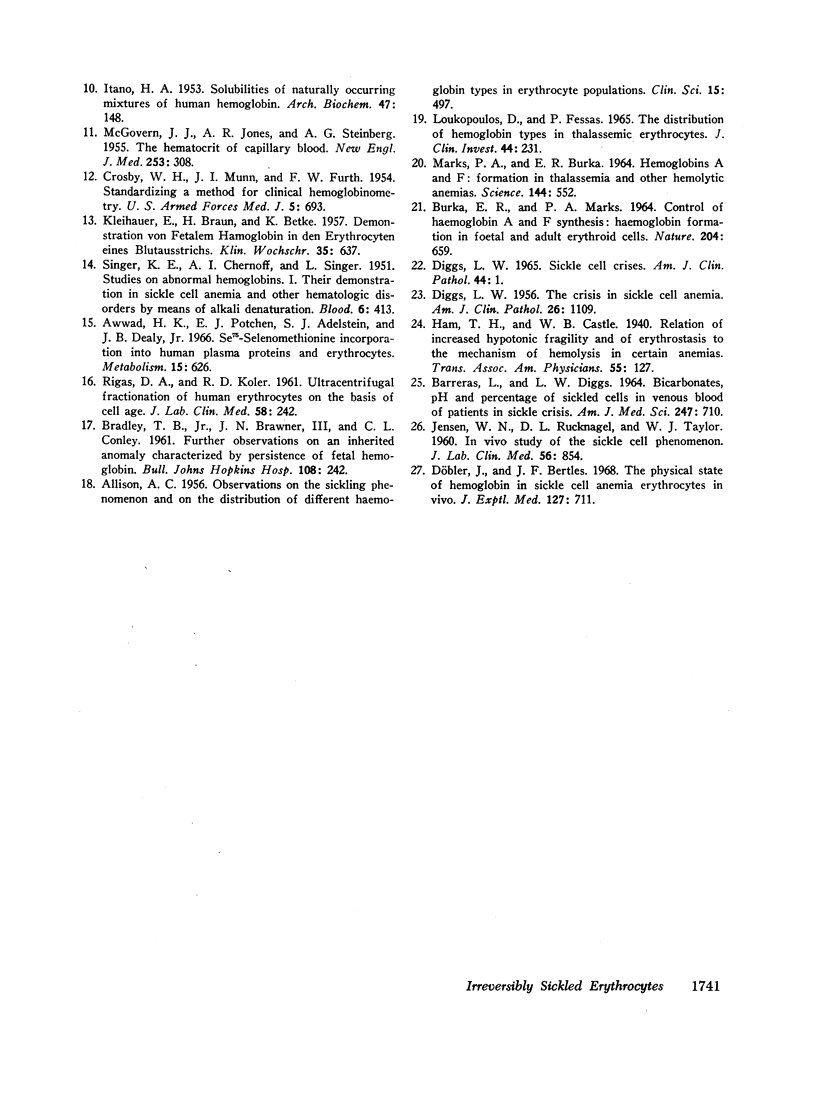
Images in this article
Selected References
These references are in PubMed. This may not be the complete list of references from this article.
- ALLISON A. C. Observations on the sickling phenomenon and on the distribution of different haemoglobin types in erythrocyte populations. Clin Sci. 1956 Nov;15(4):497–510. [PubMed] [Google Scholar]
- BARRERAS L., DIGGS L. W. BICARBONATES, PH AND PERCENTAGE OF SICKLED CELLS IN VENOUS BLOOD OF PATIENTS IN SICKLE CELL CRISIS. Am J Med Sci. 1964 Jun;247:710–718. doi: 10.1097/00000441-196406000-00012. [DOI] [PubMed] [Google Scholar]
- BURKA E. R., MARKS P. A. CONTROL OF HAEMOGLOBIN A AND F SYNTHESIS: HAEMOGLOBIN FORMATION IN FOETAL AND ADULT ERYTHROID CELLS. Nature. 1964 Nov 14;204:659–661. doi: 10.1038/204659a0. [DOI] [PubMed] [Google Scholar]
- CROSBY W. H., MUNN J. I., FURTH F. W. Standardizing a method for clinical hemoglobinometry. U S Armed Forces Med J. 1954 May;5(5):693–703. [PubMed] [Google Scholar]
- DIGGS L. W. The crisis in sickle cell anemia; hematologic studies. Am J Clin Pathol. 1956 Oct;26(10):1109–1118. doi: 10.1093/ajcp/26.10.1109. [DOI] [PubMed] [Google Scholar]
- Döbler J., Bertles J. F. The physical state of hemoglobin in sickle-cell anemia erythrocytes in vivo. J Exp Med. 1968 Apr 1;127(4):711–714. doi: 10.1084/jem.127.4.711. [DOI] [PMC free article] [PubMed] [Google Scholar]
- HUEHNS E. R., SHOOTER E. M. HUMAN HAEMOGLOBINS. J Med Genet. 1965 Mar;2(1):48–90. doi: 10.1136/jmg.2.1.48. [DOI] [PMC free article] [PubMed] [Google Scholar]
- ITANO H. A. Solubilities of naturally occurring mixtures of human hemoglobin. Arch Biochem Biophys. 1953 Nov;47(1):148–159. doi: 10.1016/0003-9861(53)90444-5. [DOI] [PubMed] [Google Scholar]
- JENSEN W. N., RUCKNAGEL D. L., TAYLOR W. J. In vivo study of the sickle cell phenomenon. J Lab Clin Med. 1960 Dec;56:854–865. [PubMed] [Google Scholar]
- KLEIHAUER E., BRAUN H., BETKE K. Demonstration von fetalem Hämoglobin in den Erythrocyten eines Blutausstrichs. Klin Wochenschr. 1957 Jun 15;35(12):637–638. doi: 10.1007/BF01481043. [DOI] [PubMed] [Google Scholar]
- LOUKOPOULOS D., FESSAS P. THE DISTRIBUTION OF HEMOGLOBIN TYPES IN THALASSEMIC ERYTHROCYTES. J Clin Invest. 1965 Feb;44:231–240. doi: 10.1172/JCI105137. [DOI] [PMC free article] [PubMed] [Google Scholar]
- MARKS P. A., BURKA E. R. HEMOGLOBINS A AND F: FORMATION IN THALASSEMIA AND OTHER HEMOLYTIC ANEMIAS. Science. 1964 May 1;144(3618):552–553. doi: 10.1126/science.144.3618.552. [DOI] [PubMed] [Google Scholar]
- McGOVERN J. J., JONES A. R., STEINBERG A. G. The hematocrit of capillary blood. N Engl J Med. 1955 Aug 25;253(8):308–312. doi: 10.1056/NEJM195508252530802. [DOI] [PubMed] [Google Scholar]
- Qawwad H. K., Potchen E. J., Adelstein S. J., Dealy J. B., Jr Se75-selenomethionine incorporation into human plasma proteins and erythrocytes. Metabolism. 1966 Jul;15(7):626–640. doi: 10.1016/0026-0495(66)90124-7. [DOI] [PubMed] [Google Scholar]
- RAYMOND S., WEINTRAUB L. Acrylamide gel as a supporting medium for zone electrophoresis. Science. 1959 Sep 18;130(3377):711–711. doi: 10.1126/science.130.3377.711. [DOI] [PubMed] [Google Scholar]
- RIGAS D. A., KOLER R. D. Ultracentrifugal fractionation of human erythrocytes on the basis of cell age. J Lab Clin Med. 1961 Aug;58:242–246. [PubMed] [Google Scholar]
- ROBINSON A. R., ROBSON M., HARRISON A. P., ZUELZER W. W. A new technique for differentiation of hemoglobin. J Lab Clin Med. 1957 Nov;50(5):745–752. [PubMed] [Google Scholar]
- SHEPARD M. K., WEATHERALL D. J., CONLEY C. L. Semi-quantitative estimation of the distribution of fetal hemoglobin in red cell populations. Bull Johns Hopkins Hosp. 1962 Jun;110:293–310. [PubMed] [Google Scholar]
- SINGER K., CHERNOFF A. I., SINGER L. Studies on abnormal hemoglobins. I. Their demonstration in sickle cell anemia and other hematologic disorders by means of alkali denaturation. Blood. 1951 May;6(5):413–428. [PubMed] [Google Scholar]
- SINGER K., FISHER B. Studies on abnormal hemoglobins. V. The distribution of type S, sickle cell, hemoglobin and type F, alkali resistant, hemoglobin within the red cell population in sickle cell anemia. Blood. 1952 Dec;7(12):1216–1226. [PubMed] [Google Scholar]




